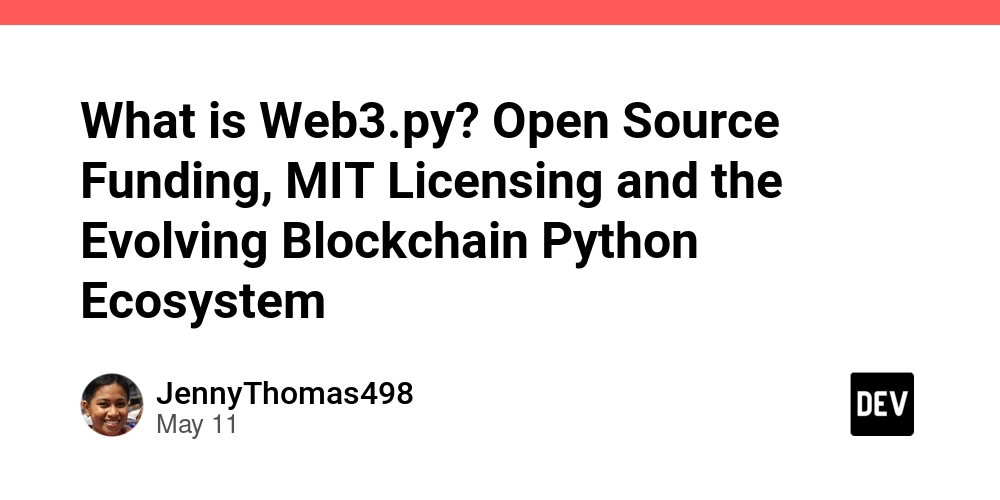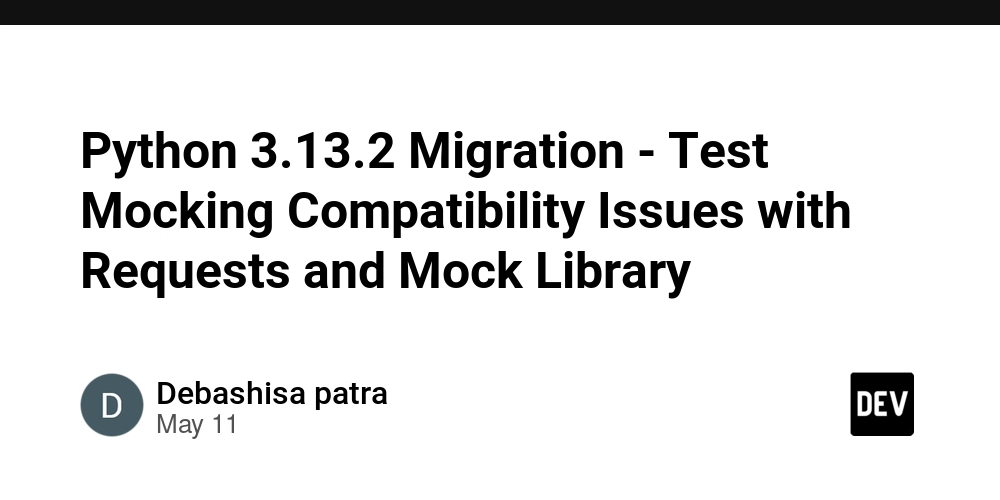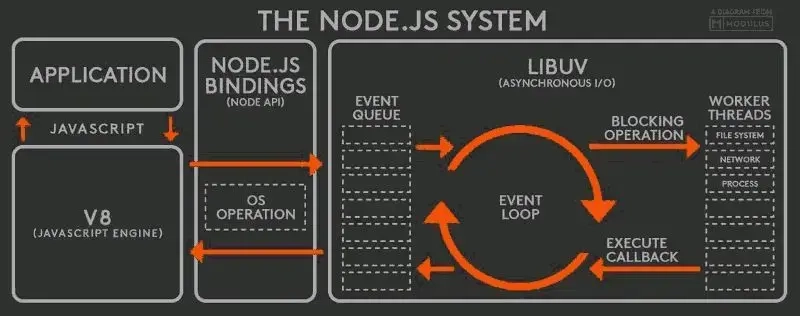What is Web3.py? Open Source Funding, MIT Licensing and the Evolving Blockchain Python Ecosystem
Abstract: This post dives into the world of Web3.py, a powerful Python library for interacting with the Ethereum blockchain. We explore its technical features, open source funding model, MIT licensing, and the strong community behind it. In addition, we compare Web3.py with other innovative funding models and blockchain projects, and highlight practical applications, challenges, and a future outlook for blockchain Python development. Drawing on insights from related projects such as Zed Run NFT Collection by Virtually Human Studio and innovative funding case studies like those discussed in Edo Run Indie Hacking Case Studies, this article presents a holistic view of how open source, funding transparency, and community engagement drive innovation in blockchain Python development. Introduction Blockchain continues to evolve as a transformative technology, and one of its most promising intersections is with Python programming. Web3.py is a leading open source Python library that enables developers to interact with Ethereum easily. With its intuitive API, robust feature set, and active community, Web3.py has become a staple tool for building decentralized applications (dApps). In this post, we explain the significance of Web3.py in the context of blockchain Python development, discuss its open source funding model and the role of the permissive MIT license, and explore its implications for the future of technology innovation. Background and Context Web3.py emerged as a solution to bridge the gap between the sophisticated Ethereum blockchain and the simplicity of Python programming. Its inception can be traced back to the need for a flexible, Python-friendly library that could manage the complex operations of blockchain technology smoothly. The library enables developers to: Query blockchain data Execute and monitor smart contracts Manage transactions and handle events The success of Web3.py is not only attributed to its technical innovations but also to its strong community ethos. Open source projects thrive on collaboration and transparency, and Web3.py is a prime example of these values. Distributed developers from around the globe contribute code, documentation, and testing improvements through its GitHub repository. Furthermore, the evolving open source funding model—relying on community donations, corporate sponsorships, and token-based contributions—has provided a sustainable pathway for continual development. This approach contrasts with traditional proprietary funding models, which often limit innovation due to secretive revenue channels and closed development cycles. Core Concepts and Features Web3.py is built on a foundation that marries the elegance of Python with the decentralized future envisioned by blockchain technology. Here are some core features that set it apart: Technical Features Feature Description Smart Contract Interaction Simplifies the deployment, invocation, and management of Ethereum smart contracts using Python-friendly abstractions. Event Handling Allows registration and listening to blockchain events to trigger actions in decentralized applications. Transaction Lifecycle Management Manages transaction signing, sending, and confirmation, thereby ensuring robust and secure transaction workflows. Network Abstraction Supports multiple Ethereum networks (mainnet, testnets, private chains), enabling developers to prototype and validate their applications efficiently. The library’s ease of use, backed by comprehensive documentation available on its official site, makes it accessible to new developers and seasoned programmers alike. Open Source Funding and MIT Licensing Web3.py is maintained under the MIT license, a permissive open source license that allows freedom in modifying, distributing, and deploying the software. Key points about its funding and licensing include: Community Donations: Individuals contribute small amounts that collectively make a significant impact. Corporate Sponsorships: Companies leveraging blockchain technology support Web3.py development in exchange for feature enhancements. Token-Based Funding: Emerging initiatives using blockchain tokenization offer rewards to long-term contributors, as seen in projects such as the Y00 TS NFT Collection by Delabs. These innovative funding methods not only ensure sustainability but also empower developers through transparent and inclusive financial models. For a broader perspective on token-based funding, check out the Terrain of NFT Marketing and Open Source Licensing. The Role of Python in Blockchain Python’s simplicity and expressiveness provide a robust environment for rapidly prototyping decentralized applications. The library’s integration with data science tools further enhances its value by making sophisticated blockchain analytics straightforward. Combined with the blockchain’s decentralized architecture, Pyth

Abstract:
This post dives into the world of Web3.py, a powerful Python library for interacting with the Ethereum blockchain. We explore its technical features, open source funding model, MIT licensing, and the strong community behind it. In addition, we compare Web3.py with other innovative funding models and blockchain projects, and highlight practical applications, challenges, and a future outlook for blockchain Python development. Drawing on insights from related projects such as Zed Run NFT Collection by Virtually Human Studio and innovative funding case studies like those discussed in Edo Run Indie Hacking Case Studies, this article presents a holistic view of how open source, funding transparency, and community engagement drive innovation in blockchain Python development.
Introduction
Blockchain continues to evolve as a transformative technology, and one of its most promising intersections is with Python programming. Web3.py is a leading open source Python library that enables developers to interact with Ethereum easily. With its intuitive API, robust feature set, and active community, Web3.py has become a staple tool for building decentralized applications (dApps). In this post, we explain the significance of Web3.py in the context of blockchain Python development, discuss its open source funding model and the role of the permissive MIT license, and explore its implications for the future of technology innovation.
Background and Context
Web3.py emerged as a solution to bridge the gap between the sophisticated Ethereum blockchain and the simplicity of Python programming. Its inception can be traced back to the need for a flexible, Python-friendly library that could manage the complex operations of blockchain technology smoothly. The library enables developers to:
- Query blockchain data
- Execute and monitor smart contracts
- Manage transactions and handle events
The success of Web3.py is not only attributed to its technical innovations but also to its strong community ethos. Open source projects thrive on collaboration and transparency, and Web3.py is a prime example of these values. Distributed developers from around the globe contribute code, documentation, and testing improvements through its GitHub repository.
Furthermore, the evolving open source funding model—relying on community donations, corporate sponsorships, and token-based contributions—has provided a sustainable pathway for continual development. This approach contrasts with traditional proprietary funding models, which often limit innovation due to secretive revenue channels and closed development cycles.
Core Concepts and Features
Web3.py is built on a foundation that marries the elegance of Python with the decentralized future envisioned by blockchain technology. Here are some core features that set it apart:
Technical Features
| Feature | Description |
|---|---|
| Smart Contract Interaction | Simplifies the deployment, invocation, and management of Ethereum smart contracts using Python-friendly abstractions. |
| Event Handling | Allows registration and listening to blockchain events to trigger actions in decentralized applications. |
| Transaction Lifecycle Management | Manages transaction signing, sending, and confirmation, thereby ensuring robust and secure transaction workflows. |
| Network Abstraction | Supports multiple Ethereum networks (mainnet, testnets, private chains), enabling developers to prototype and validate their applications efficiently. |
The library’s ease of use, backed by comprehensive documentation available on its official site, makes it accessible to new developers and seasoned programmers alike.
Open Source Funding and MIT Licensing
Web3.py is maintained under the MIT license, a permissive open source license that allows freedom in modifying, distributing, and deploying the software. Key points about its funding and licensing include:
- Community Donations: Individuals contribute small amounts that collectively make a significant impact.
- Corporate Sponsorships: Companies leveraging blockchain technology support Web3.py development in exchange for feature enhancements.
- Token-Based Funding: Emerging initiatives using blockchain tokenization offer rewards to long-term contributors, as seen in projects such as the Y00 TS NFT Collection by Delabs.
These innovative funding methods not only ensure sustainability but also empower developers through transparent and inclusive financial models. For a broader perspective on token-based funding, check out the Terrain of NFT Marketing and Open Source Licensing.
The Role of Python in Blockchain
Python’s simplicity and expressiveness provide a robust environment for rapidly prototyping decentralized applications. The library’s integration with data science tools further enhances its value by making sophisticated blockchain analytics straightforward. Combined with the blockchain’s decentralized architecture, Python’s expansive ecosystem promotes greater innovation and easier learning curves.
Applications and Use Cases
Web3.py can be integrated into various practical projects. Here are some use cases demonstrating its versatility:
- Decentralized Finance (DeFi): Companies and startups use Web3.py to develop applications that manage loans, trading, and yield farming on Ethereum. Integrations with platforms like Infura or Alchemy facilitate real-time data access.
- Supply Chain Transparency: Enterprises can leverage blockchain’s immutable ledger to track the journey of goods, ensuring authenticity and reducing fraud.
- NFT Marketplaces: Web3.py underpins platforms that handle the creation, sale, and auction of NFTs. By integrating with tokenization frameworks such as License Token’s NFT Treasure, developers can provide innovative ways of digital asset verification and distribution.
Bullet List of Open Source Funding Mechanisms
- Direct Donations: Small contributions from individual supporters.
- Corporate Sponsorships: Companies invest in open source projects to drive technological growth.
- Crowdfunding and Grants: Platforms like GitHub Sponsors help collect consistent funding streams.
- Token-Based Incentives: Using blockchain tokens to reward and motivate contributions.
Challenges and Limitations
While Web3.py leads the charge in bridging Python and blockchain technology, it faces several challenges:
- Scalability Issues: With increasing network demands, developers may experience bottlenecks that require optimization.
- Security Concerns: The decentralized nature of blockchain introduces unique security challenges, including vulnerabilities in smart contracts.
- Adoption Barriers: Despite Python’s popularity, the learning curve of blockchain concepts can be steep for newcomers.
- Regulatory Uncertainty: Changes in the regulatory landscape can impact blockchain projects and their funding models.
A balanced understanding of these challenges is crucial for developers and enterprises looking to innovate responsibly.
Future Outlook and Innovations
The landscape of blockchain Python development is continually evolving. Future trends may include:
- Enhanced Interoperability: Projects like Arbitrum and Cross-Chain Bridges promise improved integration between different blockchain networks.
- Decentralized Governance: The role of community governance, as evidenced by discussions in Arbitrum and Community Governance, will become more significant in driving transparency and collective decision-making.
- Advanced Funding Models: The convergence of token-based funding with open source development—as showcased in various Open Source Developer Compensation Plans—will likely set new standards for project sustainability.
- Innovative Licensing Models: Looking forward, the blending of open source licenses with blockchain tokenization (often referred to as “open source capitalism”) could redefine how developers fund and protect their work. Explore further discussions on this topic at License Token’s innovative licensing approaches.
In addition, integration with artificial intelligence and IoT systems may unlock unprecedented use cases, making the benefits of open source blockchain Python projects even more compelling.
Table of Trends in Blockchain Python Ecosystem
| Trend | Impact |
|---|---|
| Interoperability | Enables cross-chain transactions and broader technological collaboration. |
| Tokenized Funding | Drives sustainable development with incentives aligned to community contributions. |
| Decentralized Governance | Fosters a more transparent and democratic development process for open source projects. |
| Advanced Analytics | Integrates data science and blockchain for real-time insights, enhancing decision making in dApps and DeFi. |
Comparative Insights with Related Projects
When comparing Web3.py with other blockchain libraries, several key points emerge:
- Ease of Use: Unlike some alternatives, Web3.py leverages Python’s simple syntax, making it accessible for rapid prototyping and research.
- Community-Driven Development: The open GitHub repository fosters transparency and collaborative decision-making.
- Sustainable Funding Model: Innovative funding approaches utilizing direct donations, corporate sponsorships, and token-based rewards set Web3.py apart from many proprietary solutions.
For further insights, you might also be interested in reading Our Open Source Funding and Developer Sponsorship Experiences for a deeper look into such models.
Additionally, other projects that utilize community-driven funding models include initiatives like the World of Women NFT Collection. Such comparisons highlight how Web3.py’s open philosophy can serve as a blueprint for future projects.
Summary and Conclusions
Web3.py stands at the nexus of blockchain innovation and Python programming. By offering an accessible yet powerful toolkit for Ethereum interactions, it has catalyzed the rapid development of decentralized applications. Its permissive MIT license ensures that anyone can build upon its foundation without restrictive legal barriers, while its vibrant open source funding model—supported by community donations, corporate sponsorships, and innovative tokenization strategies—secures its continuous growth and evolution.
Key takeaways include:
- Open Source Excellence: The transparent development practices and community-driven governance make Web3.py a leading example in the blockchain ecosystem.
- Sustainable Funding Models: Innovative strategies, as seen with token-based incentives and platforms like GitHub Sponsors, ensure the project’s longevity and encourage contributions.
- Future Innovations: Enhanced interoperability, decentralized governance, and integration with AI/IoT are poised to transform the blockchain Python landscape further.
For anyone interested in exploring the detailed dynamics of Web3.py, you can read the Original Article on Web3.py for further background and technical specifics.
As the intersection of blockchain technology and Python continues to evolve, projects like Web3.py will play an essential role in shaping decentralized applications and driving open source innovation. With its comprehensive approach to funding, licensing, and community engagement, Web3.py remains an inspiring case study for developers, enterprises, and open source advocates around the world.
Additional Resources
For further reading and community insights, check out these related articles and projects:
- Arbitrum and Cross-Chain Bridges: Pioneering Blockchain Interoperability
- Open Source Developer Compensation Plans: Navigating Rewards in Collaborative Code
- The Terrain of NFT Marketing and Open Source Licensing
By integrating robust open source principles with innovative funding and community engagement, Web3.py not only facilitates seamless blockchain development with Python but also sets a high benchmark for transparency and collaborative growth. As we move toward a more decentralized digital world, embracing such models will be key to unlocking the full potential of technology innovation.
Happy coding and open sourcing!











































































































































































![[The AI Show Episode 156]: AI Answers - Data Privacy, AI Roadmaps, Regulated Industries, Selling AI to the C-Suite & Change Management](https://www.marketingaiinstitute.com/hubfs/ep%20156%20cover.png)
![[The AI Show Episode 155]: The New Jobs AI Will Create, Amazon CEO: AI Will Cut Jobs, Your Brain on ChatGPT, Possible OpenAI-Microsoft Breakup & Veo 3 IP Issues](https://www.marketingaiinstitute.com/hubfs/ep%20155%20cover.png)




































































































































































































































































_incamerastock_Alamy.jpg?width=1280&auto=webp&quality=80&disable=upscale#)
_Brain_light_Alamy.jpg?width=1280&auto=webp&quality=80&disable=upscale#)



























































































![Nothing Phone (3) has a 50MP ‘periscope’ telephoto lens – here are the first samples [Gallery]](https://i0.wp.com/9to5google.com/wp-content/uploads/sites/4/2025/06/nothing-phone-3-telephoto.jpg?resize=1200%2C628&quality=82&strip=all&ssl=1)



























































































